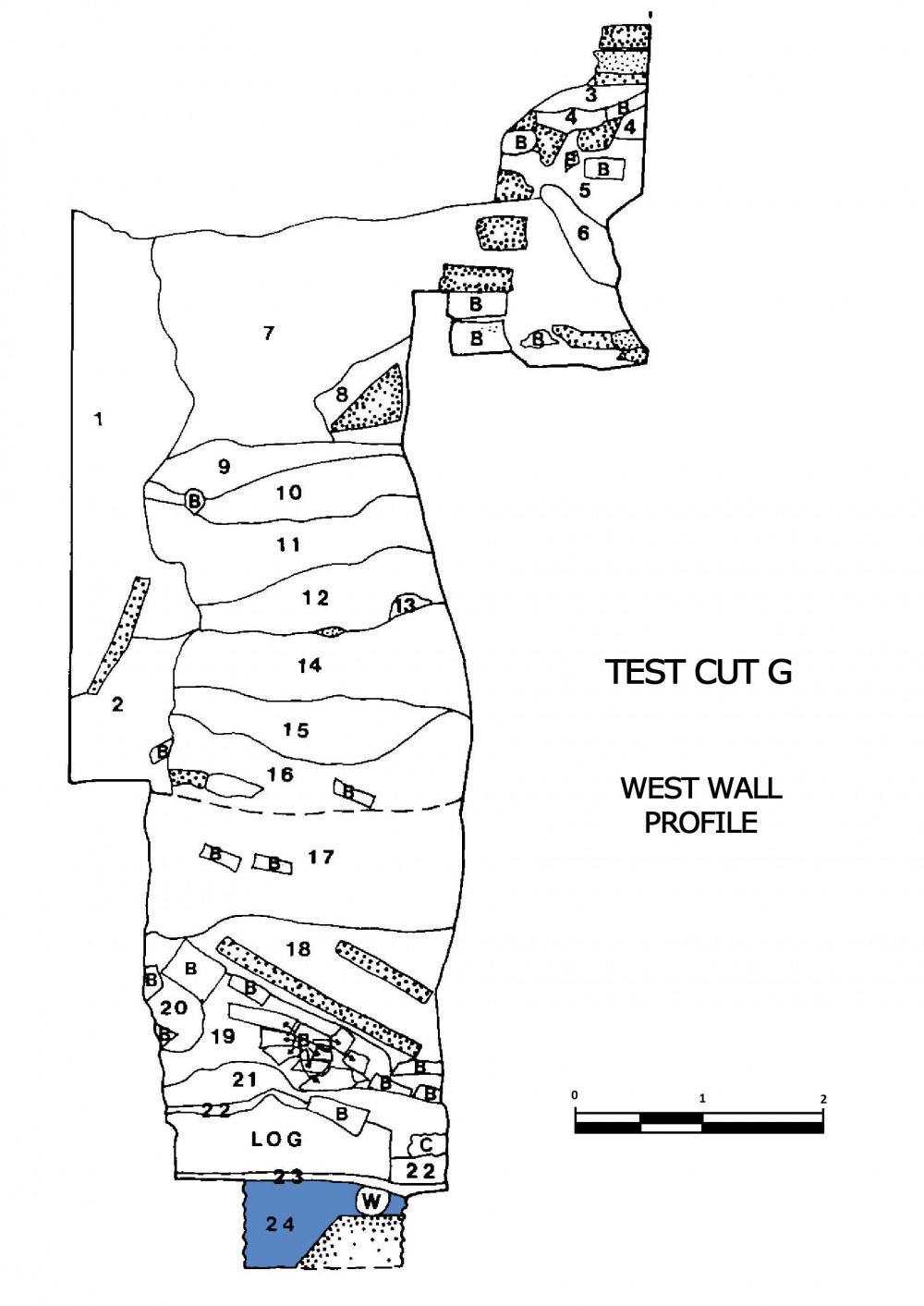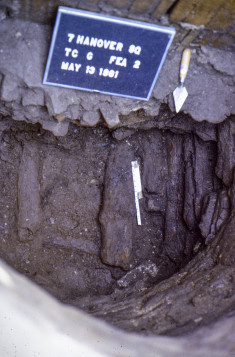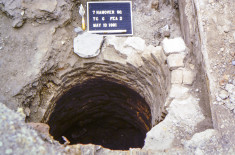This context (Catalog #244, Lot 12, Test Cut G, Strat 21, Level a) consists of artifacts found in the river bottom deposits, excavated below the base of a circular stone and brick feature located in the back yard of Lot 12, adjacent to the Lot 13 boundary wall. Backhoe testing in the backyard of Lot 12 was conducted in an undisturbed section and after the surface soil was removed, excavators found what appeared to be a curving brick wall. Test Cut G was placed to explore this feature further.
Although the soil above the curved brick wall was not disturbed, the top of the brick feature was disturbed. The southern portion of the feature had been removed by the construction of a brick rear wall erected for the 20th century structure that fronted Water Street. Although the top portion of the feature was constructed in brick, after 70 inches below the datum, the remaining part of the feature was constructed of cut stone which had been laid in a mortar, most of which had decayed. The base of the stone wall occurred at 97 inches below datum. Below the walls of the feature, logs and pieces of wood protruded from the south wall of the test cut into the excavated area and beneath the feature wall on the east and west sides. The structure was apparently supported on these logs, possibly to prevent it from settling into the underlying river bottom deposits. Although this feature did not seem to have a typical floor, a number of broken sandstone slabs and bricks were found beneath the slabs and may have been the feature’s floor, disturbed after the period of use.
Beneath the logs supporting the feature, the river bottom deposits consisted of a gray silt and were encountered at 111 inches below datum. The presence of these logs prevented any extensive excavation of this deposit and only a small area between the logs was excavated to a maximum depth of 118 inches. Only a few artifacts and faunal remains were recovered from the excavated soil.
This deposit likely represents the original 17th century shoreline and the artifacts associated with it represent objects that were thrown into the river from the shore or from boats and settled into the silt. The brick and stone arched feature, referenced above, was likely a cistern, a fire well or a dry well and was built on top of this deposit through the subsequently added landfill in the late 18th century. For more information about the deposits associated with Lot 12, please read pages 155 to 191 of the 7 Hanover Square site report.
-
Collection method
Excavated this context using trowels. All of the soil was wet screened using 1/4 inch mesh.
-
Soil description
Gray silt






